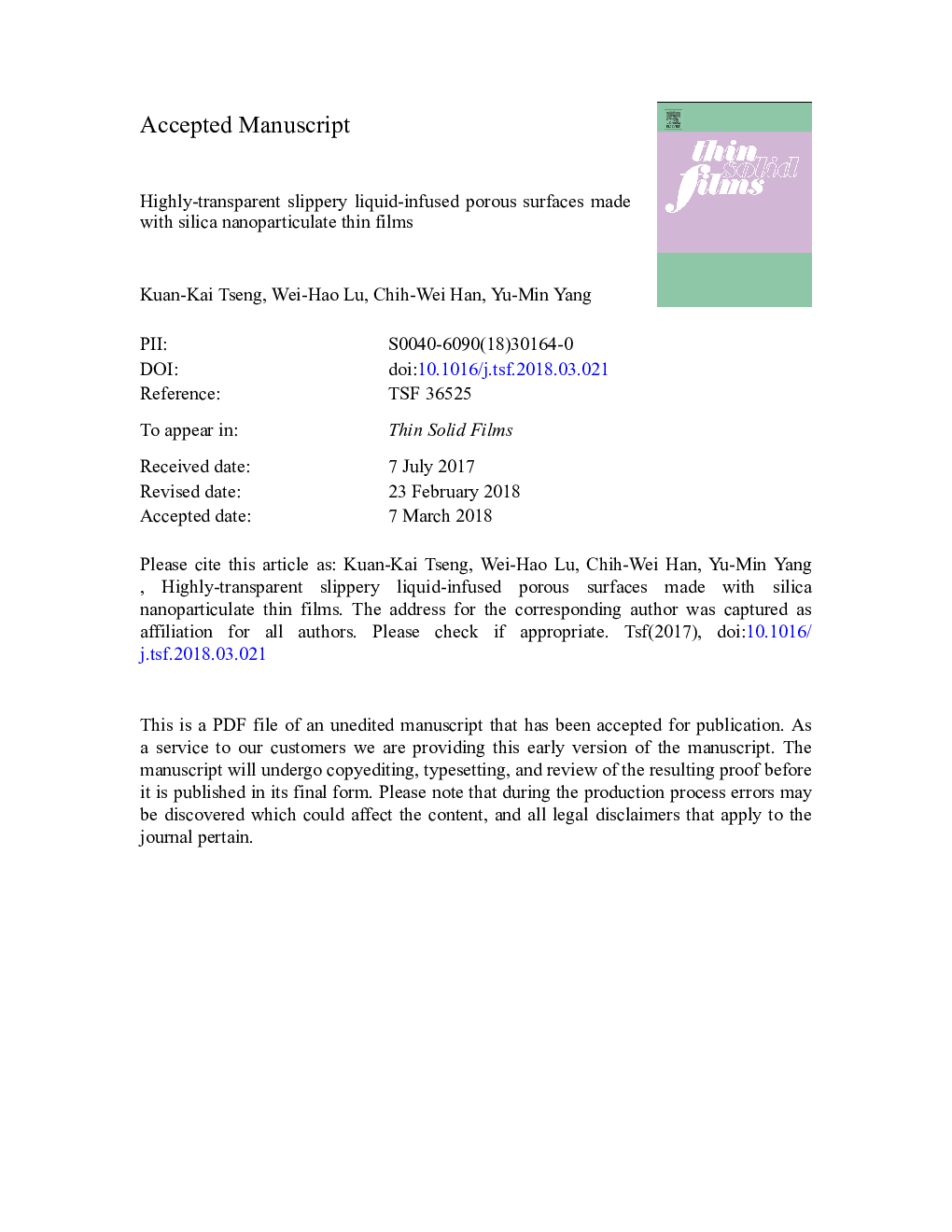| Article ID | Journal | Published Year | Pages | File Type |
|---|---|---|---|---|
| 8032730 | Thin Solid Films | 2018 | 41 Pages |
Abstract
In this work, highly-transparent slippery liquid-infused porous surfaces (SLIPSs) were fabricated by an aqueous electrostatic layer-by-layer assembly process with silica nanoparticles and polyelectrolytes on glass substrate, followed by high temperature sintering, silanization, and infusion of perfluoropolyether liquid lubricant. The tuning of liquid-repellency and transparency resulted in a near optimum SLIPS of 15 body bilayers with the average transmittance of 95.9% in the visible light region of 400â¯nm-800â¯nm and the highest transmittanceâ¯=â¯96.9% at 707â¯nm. The SLIPSs exhibited extreme liquid repellency as signified by very low sliding angles against seven pure liquids with surface tension ranged from 72.8 to 18.6â¯mN/m, including water, ethylene glycol, pentadecane, nonane, octane, heptane, and hexane. Via the method based on ellipsometry to determine the refractive index and porosity of the nanoporous thin films, a porosity of 29% was estimated for the near optimum SLIPS. Taken together, we demonstrated the highly-transparent slippery surfaces with omniphobicity developed from porous superhydrophilic nanoparticulate thin films through hydrophobization and liquid lubricant infusion, where the high optical transmittance of the as-fabricated SLIPS can be explained by the experimentally determined refractive indices of the nanoparticulate thin film.
Related Topics
Physical Sciences and Engineering
Materials Science
Nanotechnology
Authors
Kuan-Kai Tseng, Wei-Hao Lu, Chih-Wei Han, Yu-Min Yang,
